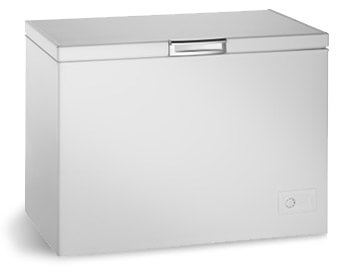
Standalone, chest or upright freezers operate like a refrigerator's freezer and enable families to purchase food in bulk at a savings. Proper maintenance will reduce energy consumption and keep the unit operating efficiently.
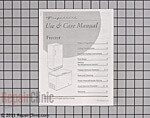
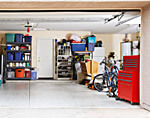
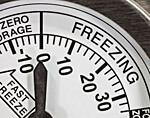
To perform optimally, a freezer thermostat should be set at zero degrees Fahrenheit (-18 degrees Celsius). If your model does not have a thermostat, use a thermometer to check the temperature. Adjust the freezer control as needed.
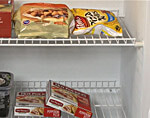
Use a damp rag and a small amount of dish detergent to clean the interior. For spills and stickiness in the interior and on the gasket (door seal), try a spray cleaner like Goo Gone.
You can get rid of freezer odor by using a deodorizer. We like this one – Fridge Aid, a recyclable and biodegradable, high-absorbency paper honeycomb filter. According to the manufacturer, it's laboratory-tested to be 50 times more powerful than baking soda in absorbing powerful food odors.

The gasket keeps cool air inside of the freezer and warm air outside of it. A worn and torn gasket requires the freezer to use more energy to do its job. Fortunately, replacing a gasket is inexpensive and easy.
How to defrost a chest freezer:
Automatic defrost models:
Note that for models with condenser coils located inside of the freezer walls: Since the coils release the heat through the walls, it's wise to position the freezer with plenty of space around it so the heat can dissipate efficiently.
Manual defrost models:
Freezer burn is dehydration caused by food being exposed to the air in the freezer. Often packaging insufficiently prevents dehydration. Re-wrapping food in airtight containers or wrappings usually avoids this problem. It's safe to cook and eat freezer-burned food, but the resulting meal is often tough and tasteless.
If your freezer is not a self-defrosting model, frost build-up is normal. But when the frost gets to be one half inch (or about one centimeter) thick, it's time for you to defrost it.
All freezers should be in the 0 to 8 degrees Fahrenheit (approximately -18 degrees to -13 degrees Celsius) range. However, when you first turn on the freezer, or put a lot of food into it, it may take up to 24 hours for the freezer to reach this temperature range.
Your freezer, whether it's combined with a refrigerator or a stand-alone, works better when it's full. That's because the frozen items help keep the other items cold as well as help maintain the cooler temperature in your freezer.
If your freezer currently has some extra space – don't worry – we're not telling you to buy more groceries to fill it! All you have to do is throw in any extra ice packs you might have or fill up some plastic to-go containers, plastic baggies and/or empty milk jugs with water and add them to the freezer. (Leave some space when filling them, however, since water expands when it freezes.) It may seem silly, but it'll help your freezer run more efficiently and save you money on your electric bill.
Check out our free freezer troubleshooting and repair help information. Be sure to enter your freezer's model number.